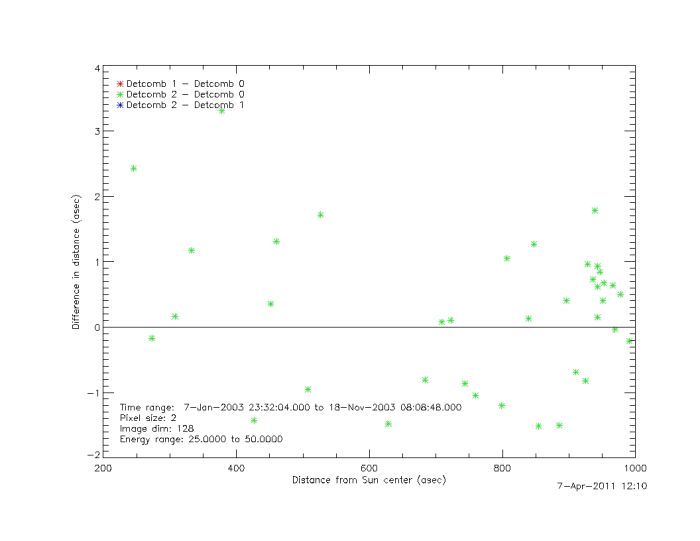Weekly Report 8Apr2011: Difference between revisions
Jump to navigation
Jump to search
imported>Agopie |
imported>Agopie |
||
| Line 11: | Line 11: | ||
[[File:DiffvsDistance 2003 15 25 detcom1 detcom0.jpg|center|thumb| | [[File:DiffvsDistance 2003 15 25 detcom1 detcom0.jpg|center|thumb|700px|]] | ||
[[File:DiffvsDistance 2003 15 25 detcom2 detcom0.jpg |center|thumb| | [[File:DiffvsDistance 2003 15 25 detcom2 detcom0.jpg |center|thumb|700px|]] | ||
[[File:Diff dist 25to50 dcob1 minus dcomb0.jpg|center|thumb| | [[File:Diff dist 25to50 dcob1 minus dcomb0.jpg|center|thumb|700px|]] | ||
[[File:Dif dist 25to50 dcomb2 minus dcomb0.jpg|center|thumb| | [[File:Dif dist 25to50 dcomb2 minus dcomb0.jpg|center|thumb|700px|]] | ||
[[File:DiffvsDistance 2003 15 25 50 ratio.jpg|center|thumb| | [[File:DiffvsDistance 2003 15 25 50 ratio.jpg|center|thumb|700px|]] | ||
Revision as of 21:52, 11 April 2011
RHESSI Albedo Imaging Test
RHESSI Clean Imaging techniques were used to image large groups of flares using different detector combinations and energy ranges. The following were used to create the Clean images:
- Time: Decided by the peak of a flare in the 25keV - 50keV range
- Energy: 12kev - 25keV, or 25keV - 50KeV
- Detectors: 3 to 9, or 3 to 6, or 6 to 9
- Clean Beam Width Factor = 2
For each energy range (12keV-25keV and 25keV-50keV) an image was made for each detector combination.




